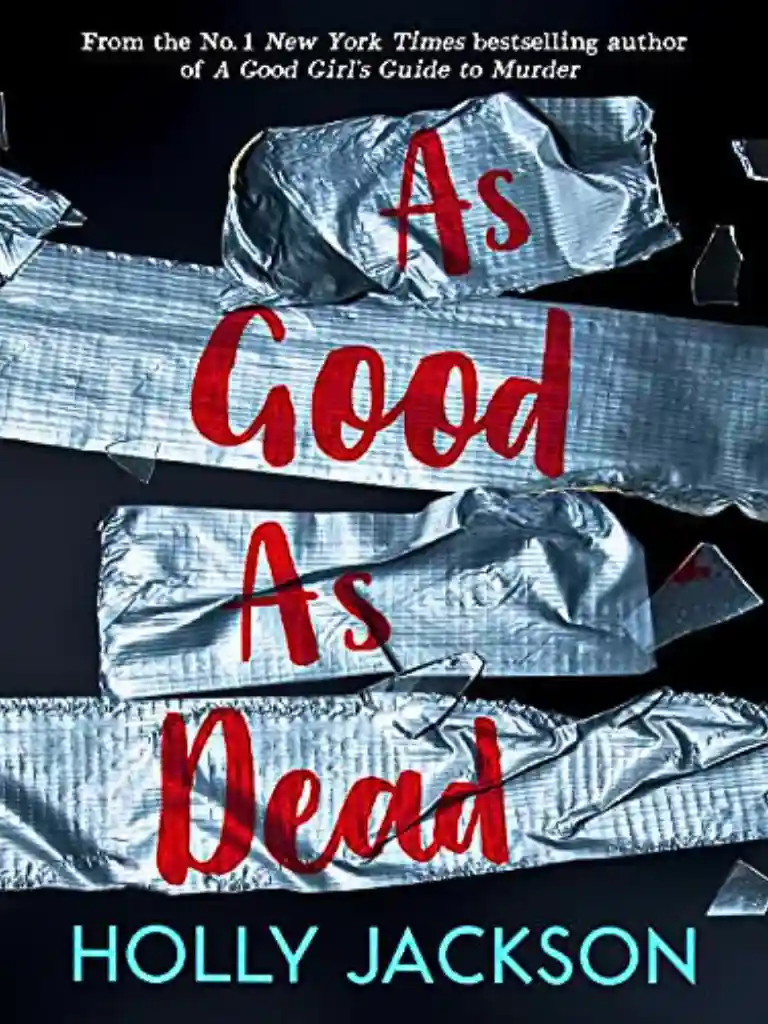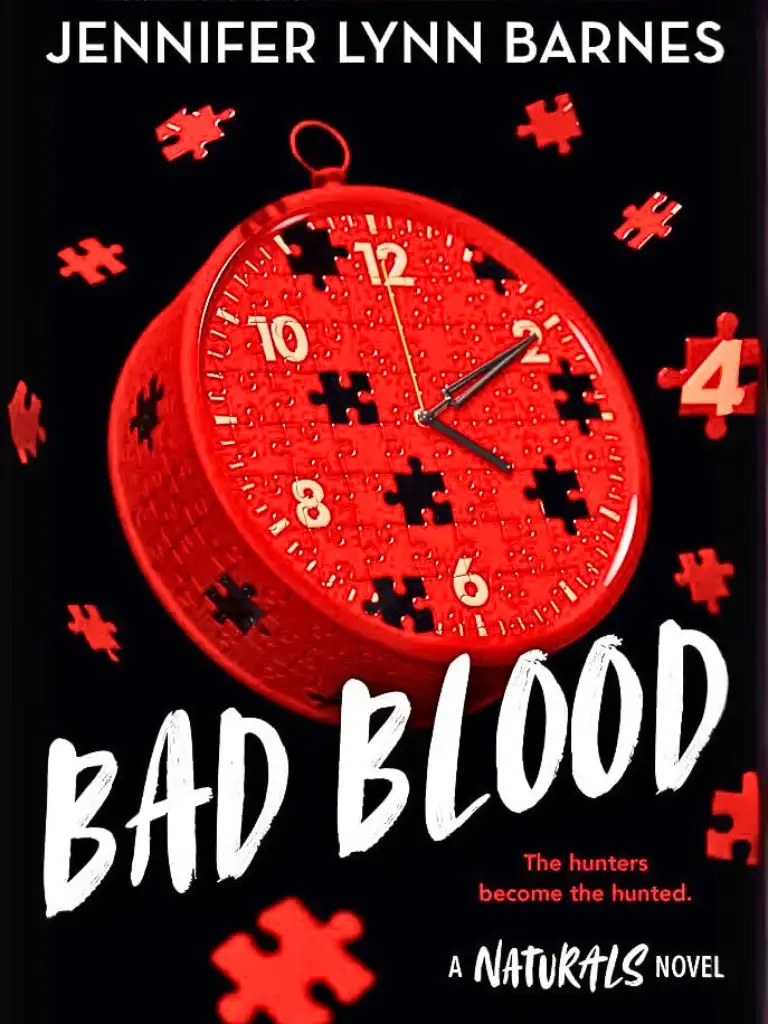UNCOVERING SECRETS: THE PROBLEM OF TRAUMATIC MEMORY
It is a strange thing that all the memories have these two qualities. They are always full of quietness, that is the most striking thing about them; and even when things weren’t like that in reality, they still seem to have that quality. They are soundless apparitions, which speak to me by looks and gestures, wordless and silent—and their silence is precisely what disturbs me.
—Erich Maria Remarque, All Quiet on the Western Front
In the spring of 2002 I was asked to examine a young man who claimed to have been sexually abused while he was growing up by
Paul Shanley, a Catholic priest who had served in his parish in Newton, Massachusetts. Now twenty-five years old, he had apparently forgotten the abuse until he heard that the priest was currently under investigation for molesting young boys. The question posed to me was: Even though he had seemingly “repressed” the abuse for well over a decade after it ended, were his memories credible, and was I prepared to testify to that fact before a judge?
I will share what this man, whom I’ll call Julian, told me, drawing on my original case notes. (Even though his real name is in the public record, I’m using a pseudonym because I hope that he has regained some privacy and peace with the passage of time.)
His experiences illustrate the complexities of traumatic memory. The controversies over the case against Father Shanley are also typical of the passions that have swirled around this issue since psychiatrists first described the unusual nature of traumatic memories in the final decades of the nineteenth century.
FLOODED BY SENSATIONS AND IMAGES
On February 11, 2001, Julian was serving as a military policeman at an air force base. During his daily phone conversation with his girlfriend, Rachel, she mentioned a lead article she’d read that morning in the Boston Globe. A priest named Shanley was under suspicion for molesting children. Hadn’t Julian once told her about a Father Shanley who had been his parish priest back in Newton? “Did he ever do anything to you?” she asked. Julian initially recalled Father Shanley as a kind man who’d been very supportive after his parents got divorced. But as the conversation went on, he started to go into a panic. He suddenly saw Shanley silhouetted in a doorframe, his hands stretched out at forty-five degrees, staring at Julian as he urinated. Overwhelmed by emotion, he told Rachel, “I’ve got to go.” He called his flight chief, who came over accompanied by the first sergeant. After he met with the two of them, they took him to the base chaplain. Julian recalls telling him: “Do you know what is going on in Boston? It happened to me, too.” The moment he heard himself say those words, he knew for certain that Shanley had molested him—even though he did not remember the details. Julian felt extremely embarrassed about being so emotional; he had always been a strong kid who kept things to himself.
That night he sat on the corner of his bed, hunched over, thinking he was losing his mind and terrified that he would be locked up. Over the subsequent week images kept flooding into his mind, and he was afraid of breaking down completely. He thought about taking a knife and plunging it into his leg just to stop the mental pictures. Then the panic attacks started to be accompanied by seizures, which he called “epileptic fits.” He scratched his body until he bled. He constantly felt hot, sweaty, and agitated. Between panic attacks he “felt like a zombie”; he was observing himself from a distance, as if what he was experiencing were actually happening to somebody else.
In April he received an administrative discharge, just ten days short of being eligible to receive full benefits.
When Julian entered my office almost a year later, I saw a handsome, muscular guy who looked depressed and defeated. He told me immediately that he felt terrible about having left the air force. He had wanted to make it his career, and he’d always received excellent evaluations. He loved the challenges and the teamwork, and he missed the structure of the military lifestyle.
Julian was born in a Boston suburb, the second-oldest of five children. His father left the family when Julian was about six because he could not tolerate living with Julian’s emotionally labile mother. Julian and his father get along quite well, but he sometimes reproaches his father for having worked too hard to support his family and for abandoning him to the care of his unbalanced mother. Neither his parents nor any of his siblings has ever received psychiatric care or been involved with drugs.
Julian was a popular athlete in high school. Although he had many friends, he felt pretty bad about himself and covered up for being a poor student by drinking and partying. He feels ashamed that he took advantage of his popularity and good looks by having sex with many girls. He mentioned wanting to call several of them to apologize for how badly he’d treated them.
He remembered always hating his body. In high school he took steroids to pump himself up and smoked marijuana almost every day. He did not go to college, and after graduating from high school he was virtually homeless for almost a year because he could no longer stand living with his mother. He enlisted to try to get his life back on track.
Julian met Father Shanley at age six when he was taking a CCD (catechism) class at the parish church. He remembered Father Shanley taking him out of the class for confession. Father Shanley rarely wore a cassock, and Julian remembered the priest’s dark blue corduroy pants. They would go to a big room with one chair facing another and a bench to kneel on. The chairs were covered with red and there was a red velvet cushion on the bench. They played cards, a game of war that turned into strip poker. Then he remembered standing in front of a mirror in that room. Father Shanley made him bend over. He remembered Father Shanley putting a finger into his anus. He does not think Shanley ever
penetrated him with his penis, but he believes that the priest fingered him on numerous occasions.
Other than that, his memories were quite incoherent and fragmentary. He had flashes of images of Shanley’s face and of isolated incidents: Shanley standing in the door of the bathroom; the priest going down on his knees and moving “it” around with his tongue. He could not say how old he was when that happened. He remembered the priest telling him how to perform oral sex, but he did not remember actually doing it. He remembered passing out pamphlets in church and then Father Shanley sitting next to him in a pew, fondling him with one hand and holding Julian’s hand on himself with the other. He remembered that, as he grew older, Father Shanley would pass close to him and caress his penis. Paul did not like it but did not know what to do to stop it. After all, he told me, “Father Shanley was the closest thing to God in my neighborhood.”
In addition to these memory fragments, traces of his sexual abuse were clearly being activated and replayed. Sometimes when he was having sex with his girlfriend, the priest’s image popped into his head, and, as he said, he would “lose it.” A week before I interviewed him, his girlfriend had pushed a finger into his mouth and playfully said: “You give good head.” Julian jumped up and screamed, “If you ever say that again I’ll fucking kill you.” Then, terrified, they both started to cry. This was followed by one of Julian’s “epileptic fits,” in which he curled up in a fetal position, shaking and whimpering like a baby. While telling me this Julian looked very small and very frightened.
Julian alternated between feeling sorry for the old man that Father Shanley had become and simply wanting to “take him into a room somewhere and kill him.” He also spoke repeatedly of how ashamed he felt, how hard it was to admit that he could not protect himself: “Nobody fucks with me, and now I have to tell you this.” His self-image was of a big, tough Julian.
How do we make sense of a story like Julian’s: years of apparent forgetting, followed by fragmented, disturbing images, dramatic physical symptoms, and sudden reenactments? As a therapist treating people with a legacy of trauma, my primary concern is not to determine exactly what happened to them but to help them tolerate the sensations, emotions, and reactions they experience without being constantly hijacked by them.
When the subject of blame arises, the central issue that needs to be
addressed is usually self-blame—accepting that the trauma was not their fault, that it was not caused by some defect in themselves, and that no one could ever have deserved what happened to them.
Once a legal case is involved, however, determination of culpability becomes primary, and with it the admissibility of evidence. I had previously examined twelve people who had been sadistically abused as children in a Catholic orphanage in Burlington, Vermont. They had come forward (with many other claimants) more than four decades later, and although none had had any contact with the others until the first claim was filed, their abuse memories were astonishingly similar: They all named the same names and the particular abuses that each nun or priest had committed—in the same rooms, with the same furniture, and as part of the same daily routines. Most of them subsequently accepted an out-of-court settlement from the Vermont diocese.
Before a case goes to trial, the judge holds a so-called Daubert hearing to set the standards for expert testimony to be presented to the jury. In a 1996 case I had convinced a federal circuit court judge in Boston that it was common for traumatized people to lose all memories of the event in question, only to regain access to them in bits and pieces at a much later date. The same standards would apply in Julian’s case.
While my report to his lawyer remains confidential, it was based on decades of clinical experience and research on traumatic memory, including the work of some of the great pioneers of modern psychiatry.
NORMAL VERSUS TRAUMATIC MEMORY
We all know how fickle memory is; our stories change and are constantly revised and updated. When my brothers, sisters, and I talk about events in our childhood, we always end up feeling that we grew up in different families—so many of our memories simply do not match. Such autobiographical memories are not precise reflections of reality; they are stories we tell to convey our personal take on our experience.
The extraordinary capacity of the human mind to rewrite memory is illustrated in the Grant Study of Adult Development, which has systematically followed the psychological and physical health of more than two hundred Harvard men from their sophomore years of 1939–44 to the present. Of course, the designers of the study could not have anticipated that most of the participants would go off to fight in World
War II, but we can now track the evolution of their wartime memories. The men were interviewed in detail about their war experiences in 1945/1946 and again in 1989/1990. Four and a half decades later, the majority gave very different accounts from the narratives recorded in their immediate postwar interviews: With the passage of time, events had been bleached of their intense horror. In contrast, those who had been traumatized and subsequently developed PTSD did not modify their accounts; their memories were preserved essentially intact forty-five years after the war ended.
Whether we remember a particular event at all, and how accurate our memories of it are, largely depends on how personally meaningful it was and how emotional we felt about it at the time. The key factor is our level of arousal. We all have memories associated with particular people, songs, smells, and places that stay with us for a long time. Most of us still have precise memories of where we were and what we saw on Tuesday, September 11, 2001, but only a fraction of us recall anything in particular about September 10.
Most day-to-day experience passes immediately into oblivion. On ordinary days we don’t have much to report when we come home in the evening. The mind works according to schemes or maps, and incidents that fall outside the established pattern are most likely to capture our attention. If we get a raise or a friend tells us some exciting news, we will retain the details of the moment, at least for a while. We remember insults and injuries best: The adrenaline that we secrete to defend against potential threats helps to engrave those incidents into our minds. Even if the content of the remark fades, our dislike for the person who made it usually persists.
When something terrifying happens, like seeing a child or a friend get hurt in an accident, we will retain an intense and largely accurate memory of the event for a long time. As James McGaugh and colleagues have shown, the more adrenaline you secrete, the more precise your memory will be. But that is true only up to a certain point. Confronted with horror—especially the horror of “inescapable shock”—this system becomes overwhelmed and breaks down.
Of course, we cannot monitor what happens during a traumatic experience, but we can reactivate the trauma in the laboratory, as was done for the brain scans in chapters 3 and 4. When memory traces of the original sounds, images, and sensations are reactivated, the frontal lobe
shuts down, including, as we’ve seen, the region necessary to put feelings into words, the region that creates our sense of location in time, and the thalamus, which integrates the raw data of incoming sensations. At this point the emotional brain, which is not under conscious control and cannot communicate in words, takes over. The emotional brain (the limbic area and the brain stem) expresses its altered activation through changes in emotional arousal, body physiology, and muscular action.
Under ordinary conditions these two memory systems—rational and emotional collaborate to produce an integrated response. But high arousal not only changes the balance between them but also disconnects other brain areas necessary for the proper storage and integration of incoming information, such as the hippocampus and the thalamus. As a result, the imprints of traumatic experiences are organized not as coherent logical narratives but in fragmented sensory and emotional traces: images, sounds, and physical sensations. Julian saw a man with outstretched arms, a pew, a staircase, a strip poker game; he felt a sensation in his penis, a panicked sense of dread. But there was little or no story.
UNCOVERING THE SECRETS OF TRAUMA
In the late nineteenth century, when medicine first began the systematic study of mental problems, the nature of traumatic memory was one of the central topics under discussion. In France and England a prodigious number of articles were published on a syndrome known as “railway spine,” a psychological aftermath of railroad accidents that included loss of memory.
The greatest advances, however, came in the study of hysteria, a mental disorder characterized by emotional outbursts, susceptibility to suggestion, and contractions and paralyses of the muscles that could not be explained by simple anatomy. Once considered an affliction of unstable or malingering women (the name comes from the Greek word for “womb”), hysteria now became a window into the mysteries of mind and body. The names of some of the greatest pioneers in neurology and psychiatry, such as Jean-Martin Charcot, Pierre Janet, and Sigmund Freud, are associated with the discovery that trauma is at the root of hysteria, particularly the trauma of childhood sexual abuse. These early
researchers referred to traumatic memories as “pathogenic secrets”9 or “mental parasites,”10 because as much as the sufferers wanted to forget whatever had happened, their memories kept forcing themselves into consciousness, trapping them in an ever-renewing present of existential horror.
The interest in hysteria was particularly strong in France, and, as so
often happens, its roots lay in the politics of the day. Jean-Martin Charcot, who is widely regarded as the father of neurology and whose pupils, such as Gilles de la Tourette, lent their names to numerous neurological diseases, was also active in politics. After Emperor Napoleon III abdicated in 1870, there was a struggle between the monarchists (the old order backed by the clergy), and the advocates of the fledgling French Republic, who believed in science and in secular democracy. Charcot believed that women would be a critical factor in this struggle, and his investigation of hysteria “offered a scientific explanation for phenomena such as demonic possession states, witchcraft, exorcism, and religious ecstasy.”
Charcot conducted meticulous studies of the physiological and neurological correlates of hysteria in both men and women, all of which emphasized embodied memory and a lack of language. For example, in 1889 he published the case of a patient named LeLog, who developed paralysis of the legs after being involved in a traffic accident with a horse-drawn cart. Although Lelog fell to the ground and lost consciousness, his legs appeared unhurt, and there were no neurological signs that would indicate a physical cause for his paralysis. Charcot discovered that just before Lelog passed out, he saw the wheels of the cart approaching him and strongly believed he would be run over. He noted that “the patient . . . does not preserve any recollection. . . .
Questions addressed to him upon this point are attended with no result. He knows nothing or almost nothing.” Like many other patients at the Salpêtrière, Lelog expressed his experience physically: Instead of remembering the accident, he developed paralysis of his legs.
PAINTING BY ANDRE BROUILLET
Jean-Martin Charcot presents the case of a patient with hysteria. Charcot transformed La Salpêtrière, an ancient asylum for the poor of Paris, which he transformed into a modern hospital. Notice the patient’s dramatic posture.
But for me the real hero of this story is Pierre Janet, who helped Charcot establish a research laboratory devoted to the study of hysteria at the Salpêtrière. In 1889, the same year that the Eiffel Tower was built, Janet published the first book-length scientific account of traumatic stress: L’automatisme psychologique.15 Janet proposed that at the root of what we now call PTSD was the experience of “vehement emotions,” or intense emotional arousal. This treatise explained that, after having been traumatized, people automatically keep repeating certain actions, emotions, and sensations related to the trauma. And unlike Charcot, who was primarily interested in measuring and documenting patients’ physical symptoms, Janet spent untold hours talking with them, trying to discover what was going on in their minds. Also in contrast to Charcot, whose research focused on understanding the phenomenon of hysteria, Janet was first and foremost a clinician whose goal was to treat his patients. That is why I studied his case reports in detail and why he became one of my most important teachers.
AMNESIA, DISSOCIATION, AND REENACTMENT
Janet was the first to point out the difference between “narrative memory”—the stories people tell about trauma—and traumatic memory itself. One of his case histories was the story of Irène, a young woman who was hospitalized following her mother’s death from tuberculosis. Irène had nursed her mother for many months while continuing to work outside the home to support her alcoholic father and pay for her mother’s medical care. When her mother finally died, Irène—exhausted from stress and lack of sleep—tried for several hours to revive the corpse, calling out to her mother and trying to force medicine down her throat.
At one point the lifeless body dropped off the bed while Irène’s drunken
father lay passed out nearby. Even after an aunt arrived and started preparing for the burial, Irène’s denial persisted. She had to be persuaded to attend the funeral, and she laughed throughout the service. A few weeks later she was brought to the Salpêtrière, where Janet took over her case.
In addition to amnesia for her mother’s death, Irène suffered from another symptom: Several times a week she would stare, trancelike, at an empty bed, ignore whatever was going on around her, and begin to care for an imaginary person. She meticulously reproduced, rather than remembered, the details of her mother’s death.
Traumatized people simultaneously remember too little and too much. On the one hand, Irène had no conscious memory of her mother’s death—she could not tell the story of what had happened. On the other she was compelled to physically act out the events of her mother’s death. Janet’s term “automatism” conveys the involuntary, unconscious nature of her actions.
Janet treated Irène for several months, mainly with hypnosis. At the end he asked her again about her mother’s death. Irène started to cry and said, “Don’t remind me of those terrible things. My mother was dead
and my father was a complete drunk, as always. I had to take care of her dead body all night long. I did a lot of silly things in order to revive
her In the morning I lost my mind.” Not only was Irène able tell the
story, but she had also recovered her emotions: “I feel very sad and abandoned.” Janet now called her memory “complete” because it now was accompanied by the appropriate feelings.
Janet noted significant differences between ordinary and traumatic memory. Traumatic memories are precipitated by specific triggers. In Julian’s case the trigger was his girlfriend’s seductive comments; in Irène’s it was a bed. When one element of a traumatic experience is triggered, other elements are likely to automatically follow.
Traumatic memory is not condensed: It took Irène three to four hours to reenact her story, but when she was finally able to tell what had happened it took less than a minute. The traumatic enactment serves no function. In contrast, ordinary memory is adaptive; our stories are flexible and can be modified to fit the circumstances. Ordinary memory is essentially social; it’s a story that we tell for a purpose: in Irène’s case, to enlist her doctor’s help and comfort; in Julian’s case, to recruit me to join his search for justice and revenge. But there is nothing social about traumatic memory. Julian’s rage at his girlfriend’s remark served no useful purpose. Reenactments are frozen in time, unchanging, and they are always lonely, humiliating, and alienating experiences.
Janet coined the term “dissociation” to describe the splitting off and isolation of memory imprints that he saw in his patients. He was also prescient about the heavy cost of keeping these traumatic memories at bay. He later wrote that when patients dissociate their traumatic experience, they become “attached to an insurmountable obstacle” “[U]nable to integrate their traumatic memories, they seem to lose their capacity to assimilate new experiences as well. It is . . . as if their personality has definitely stopped at a certain point, and cannot enlarge any more by the addition or assimilation of new elements.” He predicted that unless they became aware of the split-off elements and integrated them into a story that had happened in the past but was now over, they would experience a slow decline in their personal and professional functioning. This phenomenon has now been well documented in contemporary research.
Janet discovered that, while it is normal to change and distort one’s memories, people with PTSD are unable to put the actual event, the source of those memories, behind them. Dissociation prevents the trauma from becoming integrated within the conglomerated, ever-shifting stores of autobiographical memory, in essence creating a dual memory system. Normal memory integrates the elements of each experience into the continuous flow of self-experience by a complex process of association; think of a dense but flexible network where each element exerts a subtle
influence on many others. But in Julian’s case, the sensations, thoughts, and emotions of the trauma were stored separately as frozen, barely comprehensible fragments. If the problem with PTSD is dissociation, the goal of treatment would be association: integrating the cut-off elements of the trauma into the ongoing narrative of life, so that the brain can recognize that “that was then, and this is now.”
THE ORIGINS OF THE “TALKING CURE”
Psychoanalysis was born on the wards of the Salpêtrière. In 1885 Freud went to Paris to work with Charcot, and he later named his firstborn son Jean-Martin in Charcot’s honor. In 1893 Freud and his Viennese mentor, Josef Breuer, cited both Charcot and Janet in a brilliant paper on the cause of hysteria. “Hysterics suffer mainly from reminiscences,” they proclaim, and go on to note that these memories are not subject to the “wearing away process” of normal memories but “persist for a long time with astonishing freshness.” Nor can traumatized people control when they will emerge: “We must . . . mention another remarkable fact . . . namely, that these memories, unlike other memories of their past lives, are not at the patients’ disposal. On the contrary, these experiences are completely absent from the patients’ memory when they are in a normal psychical state, or are only present in a highly summary form.”21 (All italics in the quoted passages are Breuer and Freud’s.)
Breuer and Freud believed that traumatic memories were lost to ordinary consciousness either because “circumstances made a reaction impossible,” or because they started during “severely paralyzing affects, such as fright.” In 1896 Freud boldly claimed that “the ultimate cause of hysteria is always the seduction of the child by an adult.” Then, faced with his own evidence of an epidemic of abuse in the best families of Vienna—one, he noted, that would implicate his own father—he quickly began to retreat. Psychoanalysis shifted to an emphasis on unconscious wishes and fantasies, though Freud occasionally kept acknowledging the reality of sexual abuse. After the horrors of World War I confronted him with the reality of combat neuroses, Freud reaffirmed that lack of verbal memory is central in trauma and that, if a person does not remember, he is likely to act out: “[H]e reproduces it not as a memory but as an action; he repeats it, without knowing, of course, that he is
repeating, and in the end, we understand that this is his way of remembering.”
The lasting legacy of Breuer and Freud’s 1893 paper is what we now
call the “talking cure”: “[W]e found, to our great surprise, at first, that each individual hysterical symptom immediately and permanently disappeared when we had succeeded in bringing clearly to light the memory of the event by which it was provoked and in arousing its accompanying affect, and when the patient had described that event in the greatest possible detail and had put the affect into words (all italics in original). Recollection without affect almost invariably produces no result.”
They explain that unless there is an “energetic reaction” to the traumatic event, the affect “remains attached to the memory” and cannot be discharged. The reaction can be discharged by an action—“from tears to acts of revenge.” “But language serves as a substitute for action; by its help, an affect can be ‘abreacted’ almost as effectively.” “It will now be understood,” they conclude, “how it is that the psychotherapeutic procedure which we have described in these pages has a curative effect. It brings to an end the operative force . . . which was not abreacted in the first instance [i.e., at the time of the trauma], by allowing its strangulated affect to find a way out through speech; and it subjects it to associative correction by introducing it into normal consciousness.”
Even though psychoanalysis is today in eclipse, the “talking cure” has lived on, and psychologists have generally assumed that telling the trauma story in great detail will help people to leave it behind. That is also a basic premise of cognitive behavioral therapy (CBT), which today is taught in graduate psychology courses around the world.
Although the diagnostic labels have changed, we continue to see patients similar to those described by Charcot, Janet, and Freud. In 1986 my colleagues and I wrote up the case of a woman who had been a cigarette girl at Boston’s Cocoanut Grove nightclub when it burned down in 1942. During the 1970s and 1980s she annually reenacted her escape on Newbury Street, a few blocks from the original location, which resulted in her being hospitalized with diagnoses like schizophrenia and bipolar disorder. In 1989 I reported on a Vietnam veteran who yearly staged an “armed robbery” on the exact anniversary of a buddy’s death. He would put a finger in his pants pocket, claim that it was a pistol, and tell a shopkeeper to empty his cash register—giving him plenty of time
to alert the police. This unconscious attempt to commit “suicide by cop” came to an end after a judge referred the veteran to me for treatment.
Once we had dealt with his guilt about his friend’s death, there were no further reenactments.
Such incidents raise a critical question: How can doctors, police officers, or social workers recognize that someone is suffering from traumatic stress as long as he reenacts rather than remember? How can patients themselves identify the source of their behavior? If their history is not known, they are likely to be labeled as crazy or punished as criminals rather than helped to integrate the past.
TRAUMATIC MEMORY ON TRIAL
At least two dozen men had claimed they were molested by Paul Shanley, and many of them reached civil settlements with the Boston archdiocese. Julian was the only victim who was called to testify in Shanley’s trial. In February 2005 the former priest was found guilty on two counts of raping a child and two counts of assault and battery on a child. He was sentenced to twelve to fifteen years in prison.
In 2007 Shanley’s attorney, Robert F. Shaw Jr., filed a motion for a new trial, challenging Shanley’s convictions as a miscarriage of justice. Shaw tried to make the case that “repressed memories” were not generally accepted in the scientific community, that the convictions were based on “junk science,” and that there had been insufficient testimony about the scientific status of repressed memories before the trial. The appeal was rejected by the original trial judge but two years later was taken up by the Supreme Judicial Court of Massachusetts. Almost one hundred leading psychiatrists and psychologists from around the United States and eight foreign countries signed an amicus curiae brief stating that “repressed memory” has never been shown to exist and that it should not have been admitted as evidence. However, on January 10, 2010, the court unanimously upheld Shanley’s conviction with this statement: “In sum, the judge’s finding that the lack of scientific testing did not make unreliable the theory that an individual may experience dissociative amnesia was supported in the record. There was no abuse of
discretion in the admission of expert testimony on the subject of dissociative amnesia.”
In the following chapter I’ll talk more about memory and forgetting and about how the debate over repressed memory, which started with Freud, continues to be played out today.








